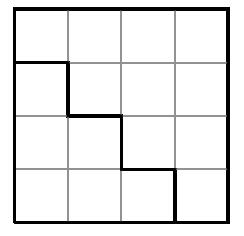Alum Books Podcast: The Proof and the Pudding
-
-
slice.mit.edu
- 2
Filed Under
Recommended
For Jim Henle PhD ’76, the beauty of both practices is in understanding from where those basics come and being able to make them oneself.
In a new book, The Proof and the Pudding, Henle, a professor of mathematics at Smith College, lays out equal parts math and cooking in a reflection on their similarities, their contributions to one another, and their continuing enigmatic puzzles. Listen to the interview with Henle.
Part cookbook and part textbook, Henle delights readers with countless stories of trial and error in the classroom and kitchen. But there are serious points to be made in The Proof and the Pudding too.
“I’m always thinking about how to bring mathematics to people and what is it that gets in the way of students connecting with mathematics,” Henle says. “In some sense this book is an answer to that, or one answer to that.”
“This is my serious point here: you have to have fun. IF you don’t have fun, you’re going to stay in math as long as people make you, and no longer,” he says.
Sprinkled among these arguments are Henle’s near-perfect recipes for breakfasts, breads, and sumptuous feasts. Ever the student of the kitchen, Henle shares his lifelong search for the perfect pizza dough and the quest to make desserts for dinner guests with high standards.

In this podcast, Henle also shares his love of simple puzzles like the clueless Sudoku.
“I like the elegance of not seeing numbers in the puzzle but numbers appear in the answer. And my favorite of these is a little four by four, there are just two regions and the sum of the numbers in each region comes out the same,” he says. (Pictured right.)
Listen to the complete podcast here. Listen to past books podcasts with novelists, professors, and entrepreneurs by visiting MITAA on Soundcloud. Have a good book to recommend, written either by you or a classmate? Tell us about it.








Comments
Emil Friedman
Tue, 05/12/2015 5:29pm
The puzzle is too easy. Each row must contain a permutation of 1,2,3,4 so the overall total must be 40 and the lower area must be 20. The only way to get that is with three 4's, two 3's, and a single 2. That gives us:
1 2 3 4
4 1 2 3
3 4 1 2
2 3 4 1
A interesting question might be whether the above is a unique solution and, if so, how to prove it unique.
Jim
Wed, 05/13/2015 4:42pm
For M.I.T. alums, yes!
Your comment answers your question, too.
If you want more interesting puzzles of the same sort, see
http://www.math.smith.edu/~jhenle/clueless/